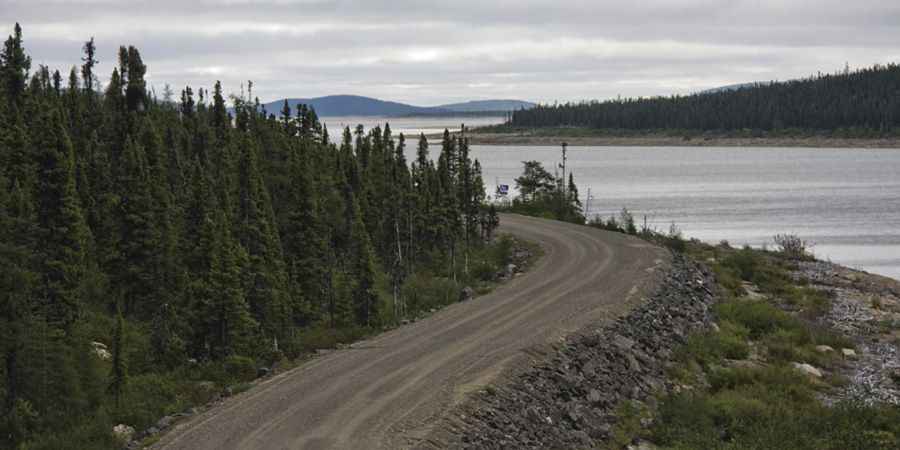Trans-Taiga Road is a very remote drive in Canada
The Trans-Taiga Road, a 666km stretch in northern Quebec, Canada, connects the James Bay Road to the Caniapiscau Reservoir. This unpaved road, devoid of towns, serves as the most remote accessible location by car in North America.

How long is the Trans-Taiga road?
Starting at km 544 of the James Bay Road, the road runs west-east. It is 666 km (413 miles) long: 582 km (362 miles) from the start to the Brisay generating station and 84 km (52 miles) along the Caniapiscau Reservoir, the largest reservoir in surface area of the James Bay Project. The entire road is unpaved. The speed limit for the first 395 km is 80 km/h. Past that point, it is 70 km/h due to the narrower road surface. Slow down and pull to the right when oncoming vehicles are approaching.
What is the farthest north you can drive in Quebec?
The road is ranked among the extremely remote roads of North America. It has no settlements or towns aside from Hydro Quebec's settlements for workers (these are private and not open to the public). At the far end of the road, you will be 745 kilometers (463 mi) from Radisson, the nearest town. This is the farthest you can get from a town on a road anywhere in North America. It’s the northernmost continuous road in Eastern North America. There's very little traffic on this road.
Is the Trans-Taiga road open?
The road is open year-round; however, it gets very cold in the winter (-40 degrees C), so if you go in the winter, or even the fall or spring, be prepared. In the summer, it can get just as hot as down south.
Do you need a 4WD vehicle to drive the Trans-Taiga road?
The road is totally unpaved but navigable by most passenger vehicles in good conditions. However, the section from Brisay (km 582) to Caniapiscau (km 666) is rougher, and a 4-wheel drive vehicle is recommended. Ensure your vehicle is equipped with relatively new tires. The main reason for this is the very coarse gravel used for this road - there are large rocks littering the road surface. However, people who have driven this road in ordinary passenger cars say it is fine. Keep your eyes open for the larger rocks though. This is not a trip for children or families. You should travel this road only in a reliable vehicle with good tires. Vehicle breakdowns here can be very costly. Flat tires can be a serious (and expensive) incident if your tires are damaged. You could be looking at having tires flown in on a non-scheduled flight - there are no convenient "tire stores" up here! There are scary stories of people blowing all four tires along this road and having to have new tires flown in on an unscheduled flight to one of the airstrips (very expensive).
Why was Trans-Taiga road built?
It was built as an access road to the hydro-electric generating stations of Hydro-Québec along the La Grande River and Caniapiscau River.
Is the Trans-Taiga road remote?
There's very little traffic on this road. There are very few rest areas and campgrounds, with none past km 203. This is a working, practical road, not a tourist road. This truly is a very remote road. Do not approach a trip along it lightly. This is not one of those "cover-my-butt" warnings. It's real. Although this is a modern gravel road, it is nevertheless a very remote road with very little traffic.
How long does it take to drive the Trans-Taiga road?
To drive the road without stopping will take most people between 12 and 15 hours. Generally, the scenery is fairly level. For most of the length, it runs through taiga: spruce and jack pine forest, bogs, rocks, and low hills. This is about all you'll see apart from birds and some wildlife.
Pic: By Axel Drainville - Flickr: Réservoir Caniapiscau vu de la route Transtaïga, CC BY 2.0, https://commons.wikimedia.org/w/index.php?curid=20163648